Warm Up For Pull Ups: Exercises, Stretches, and More
It’s a no-brainer that a proper warm-up is needed before exercise, but exactly how such a warm-up takes place can depend on what sort of exercises your workout will contain.
For pull-ups, this will require not only proper activation of the back and biceps, but also a number of other strategies that must be employed for the best possible results.
Without going into too much detail, warming up for pull-ups will require the lifter to elevate their heart rate through mild aerobic work, to ensure the joints of the arms, shoulders and back are mobile and to activate the muscles of the back and biceps through a proper warm-up drill.
What are Pull-Ups?
Pull-ups are a bodyweight compound exercise most often used as the staple back move in many calisthenic training programs. They involve the lifter being suspended by the hands from a pull-up bar and contracting the muscles of the back to pull themselves upwards - hence the name.
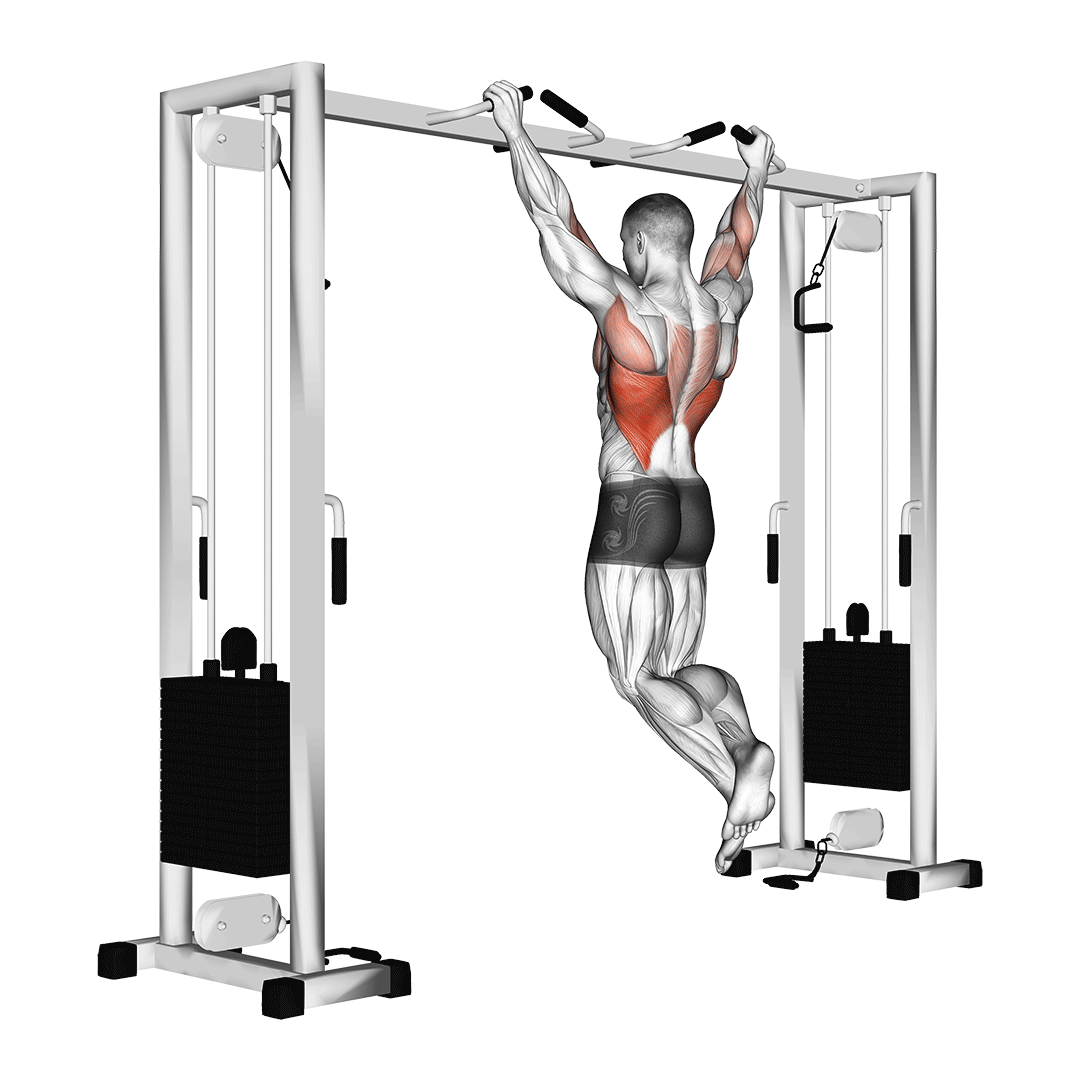
While the majority of untrained individuals are unlikely to be able to perform pull-ups for high volume sets, they are nonetheless widely used by bodyweight exercisers as the main source of back muscle training in a workout.
Benefits of Pull-Ups
Pull-ups are known for building up the mass and strength of muscles like the latissimus dorsi, biceps brachii, trapezius, rhomboids and the posterior head of the deltoids - so much so, that the pull-up is used as a primary compound exercise, even for athletes and certain types of bodybuilding training programs.
Apart from their capacity to strengthen and grow said muscles, pull-ups are also an excellent and highly convenient way of working out the upper body, as they traditionally require no more than an overhead bar to hang from.
What are the Benefits of Warming Up Before Pull-Ups?
Warming up is an essential aspect of every workout session, and can provide numerous benefits to the lifter, regardless of what exercises are being performed.
However, when specifically speaking of warming up for pull-ups, the most important advantages can be found in achieving a wider range of motion, enhancing the exerciser’s control over their own musculature and the markedly lower risk of injury.
Reduced Risk of Injury
The main reason why warm-ups are considered essential is because they reduce the risk of acute injuries.
Performing intense exercise while the body is “cold” can result in shock to the circulatory system, as well as issues with blood flow and proper function of skeletal musculature.
While this will normally translate to poor performance in the short term, it also increases the risk of injury, as the body is unprepared for exercise and has not made the proper adjustments necessary for a workout.
Fuller Range of Motion
Though it is true that range of motion is partially dictated by the exerciser’s own form adherence, poor mobility in the joints and a general lack of elasticity in the skeletal muscles of the back can cause pull-ups to be performed with an insufficient range of motion, leading to worse results and potentially sabotaging any growth the exerciser would see.
Warm-up exercises help overcome this issue by providing gentle stimulus to the joints, as well as promoting blood flow to the right muscle groups - both of which help the lifter perform pull-ups with the correct range of motion.
Greater Conscious Control of Muscles
Performing the right warm-up exercises can mentally prepare exercisers to execute a pull-up with correct form, reinforcing the mind-muscle connection and helping familiarize the exerciser with the correct mechanisms needed during pull-up performance.
For the best results in this particular aspect of warming-up, picking exercises that involve a similar set of mechanics to the pull-up is ideal.
The lat pulldown or assisted pull-up machine are good choices for such a purpose.
How to Pick the Right Warm-Up Exercises, and How to Structure Them
For the sake of simplicity, the majority of exercisers structure their warm-ups into three sections:
- An activity that raises the heart rate and enables greater circulatory system function
- Several dynamic movements that work any relevant joints to their full range of motion
- A few low-impact exercises or drills to “activate” the muscles that will be worked later in the session.
Note that these phases are in chronological order, as performing muscular activation drills before an aerobic warm-up may be counterintuitive.
Baseline Systemic Warm-Up
For the most part, when warming up for pull-ups, the chosen modality can vary greatly in method and intensity - though aerobic exercises are the ideal. So long as the chosen exercise raises the heart rate and does not prematurely fatigue the body, it is completely sufficient.
Some favorites among body weight enthusiasts are a few short bouts on a rowing machine, treadmill LISS (low impact steady-state cardio) or the use of a low-resistance stationary bike.
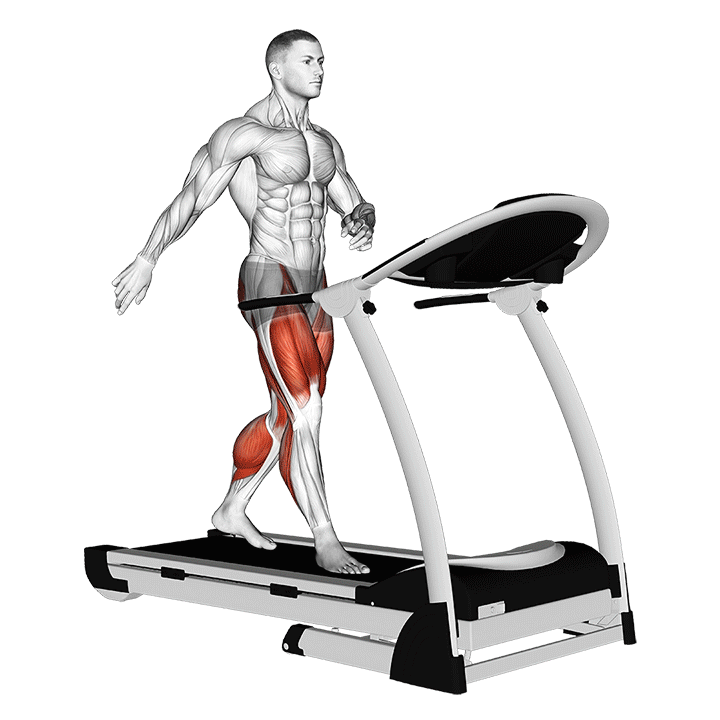
In order to avoid prematurely fatiguing the body before even starting the workout, exercisers should strive to only perform this section of the warm-up for 5-15 minutes.
Stretching the Right Joints
During pull-up performance, it is the joints of the shoulders, elbows and wrists that are used in a dynamic manner.
So as to avoid injury during the exercise, each of these areas must be targeted with a dynamic stretch or other type of mobility drill. These areas may easily be targeted with dynamic rotation drills, but may also require unidirectional stretches, such as is the case with the wrist in flexion/extension.
Activating the Right Muscles
Apart from general systemic warm-ups and ensuring the joints are limber, the muscles of the upper body must also be primed for pull-ups without inducing fatigue.
Ideally, movements that replicate the pull-up in some way are the best choice for this section of the warm-up. Movements like the lat pulldown or inverse row will both target the joints and skeletal muscles that are also involved in pull-ups.
Mobilization Drills
1. Elbow Circles
Because the elbows will translate much of the force from the back and biceps into the bar, it is important to ensure that they are mobile and stable throughout their fullest range of motion.
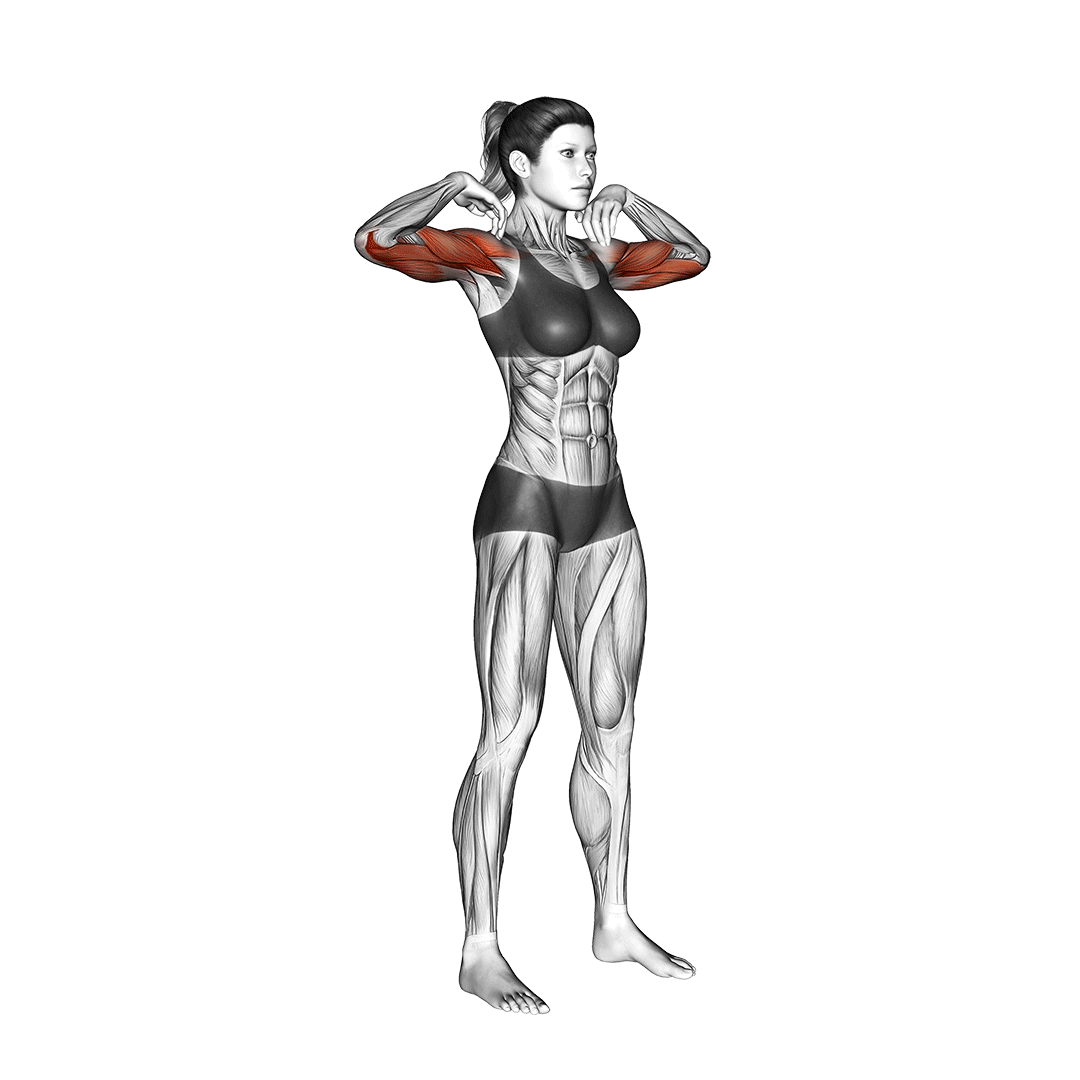
The easiest way to achieve this is to perform elbow rotations, which involve working the elbows through their full states of extension and flexion in multiple directions.
Purpose in Pull-Up Warm-Up:
Elbow rotations help the lifter achieve a full range of motion through mobilization of the elbows, preventing instability during the start of the movement and ensuring that they are capable of bending as the lifter pulls their head over the pull-up bar.
How-to:
To begin, the exerciser will fully extend the elbow with the palm facing upwards.
Bending the elbow into a state of full flexion, they will then move the hand towards the midline of the body as the elbow remains bent, stopping once the hand is over the chest.
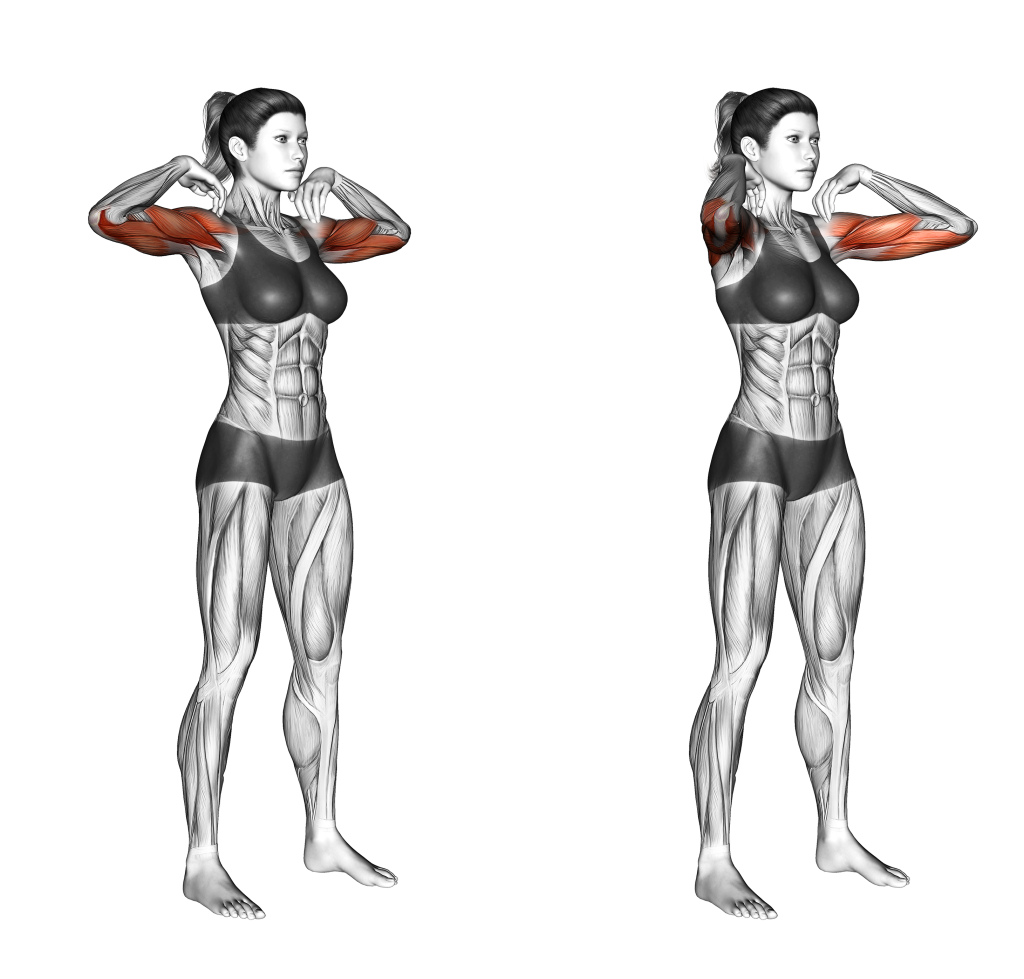
To finish the drill, they will extend the elbow outwards once more, rotating the arm so the palm is once again facing upwards.
2. Lateral and Medial Arm Rotations/Arm Circles
A classic shoulder mobility drill, arm circles allow for the joint of the shoulder to be worked through its entire range of motion, helping to prevent impingement or stiffness that can hamper the exerciser during a pull-up repetition.
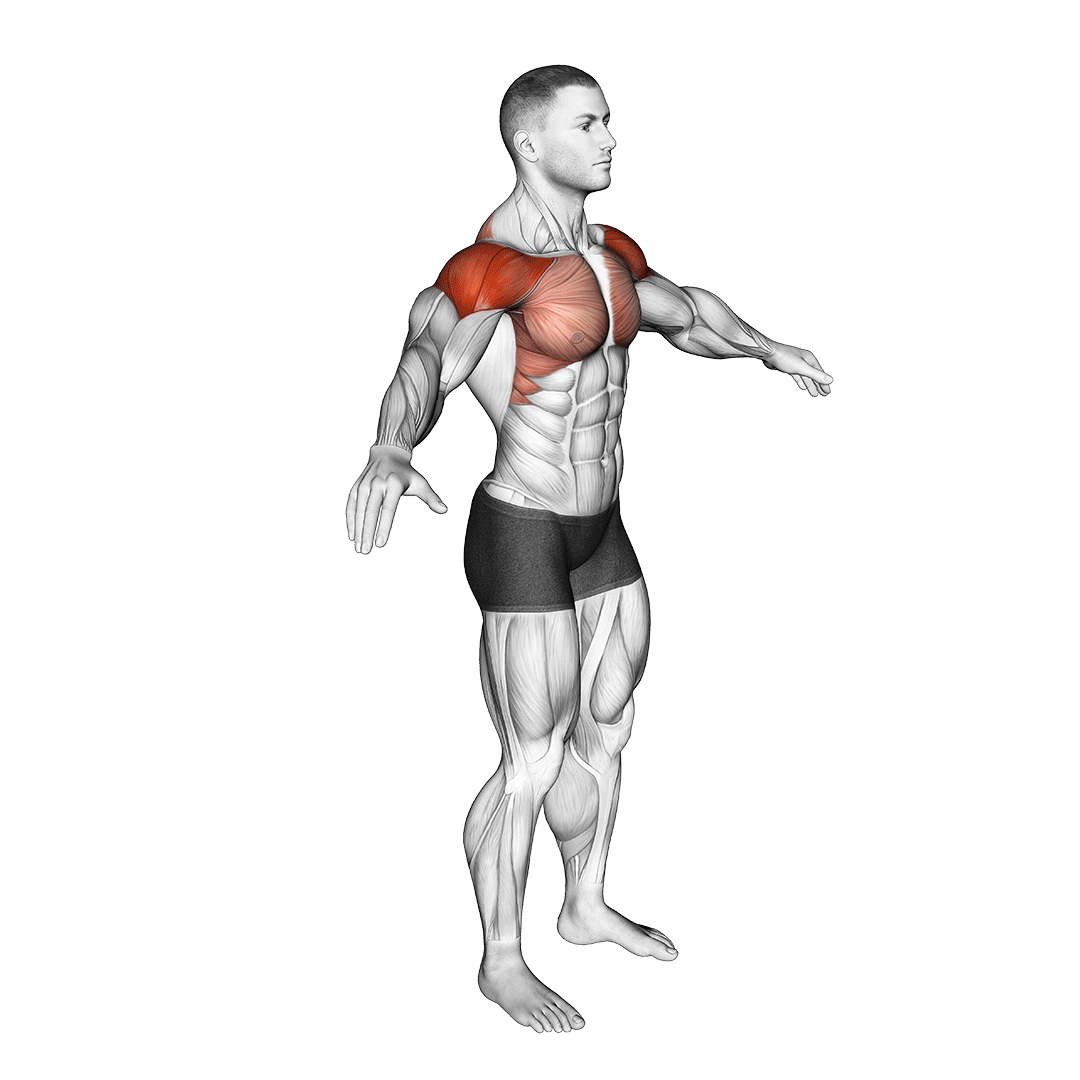
Purpose in Pull-Up Warm-Up:
Arm circles ensure that both the muscles and the joints of the shoulders are sufficiently warmed up for pull-ups, as the humerus will rotate within the shoulder joint throughout each repetition of the exercise.
Because shoulder pain is among one of the most common complaints of pull-ups, it is vitally important to ensure that the joint is dynamically stretched through a full range of motion.
How-to:
Raising both arms to the sides with the palms facing downwards, the exerciser will focus on moving the upper arms in a circular motion as the elbows remain fully extended.

This circular motion will ideally include pointing the arms at a near-vertical upwards angle, as well as one that places the upper arm parallel to the torso.
After several rotations, they will then reverse the motion.
3. Wrist Flexion and Extension
Though they are two different biomechanics that move the hand in opposite directions, performing wrist extensions and flexions may be done together, forming a single cohesive stretch that prepares the wrists for a set of pull-ups.
Here is wrist flexion:
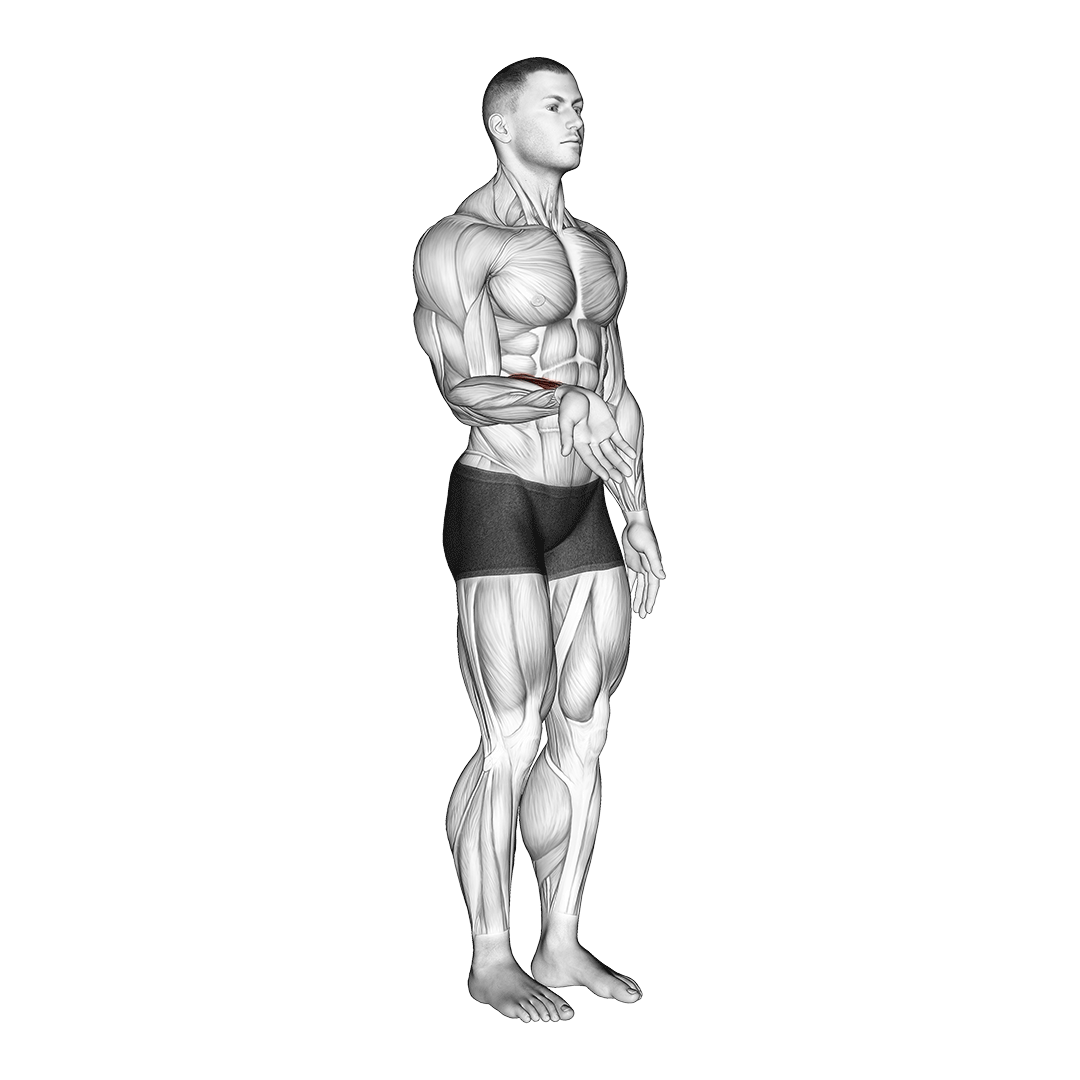
Here is wrist extension:
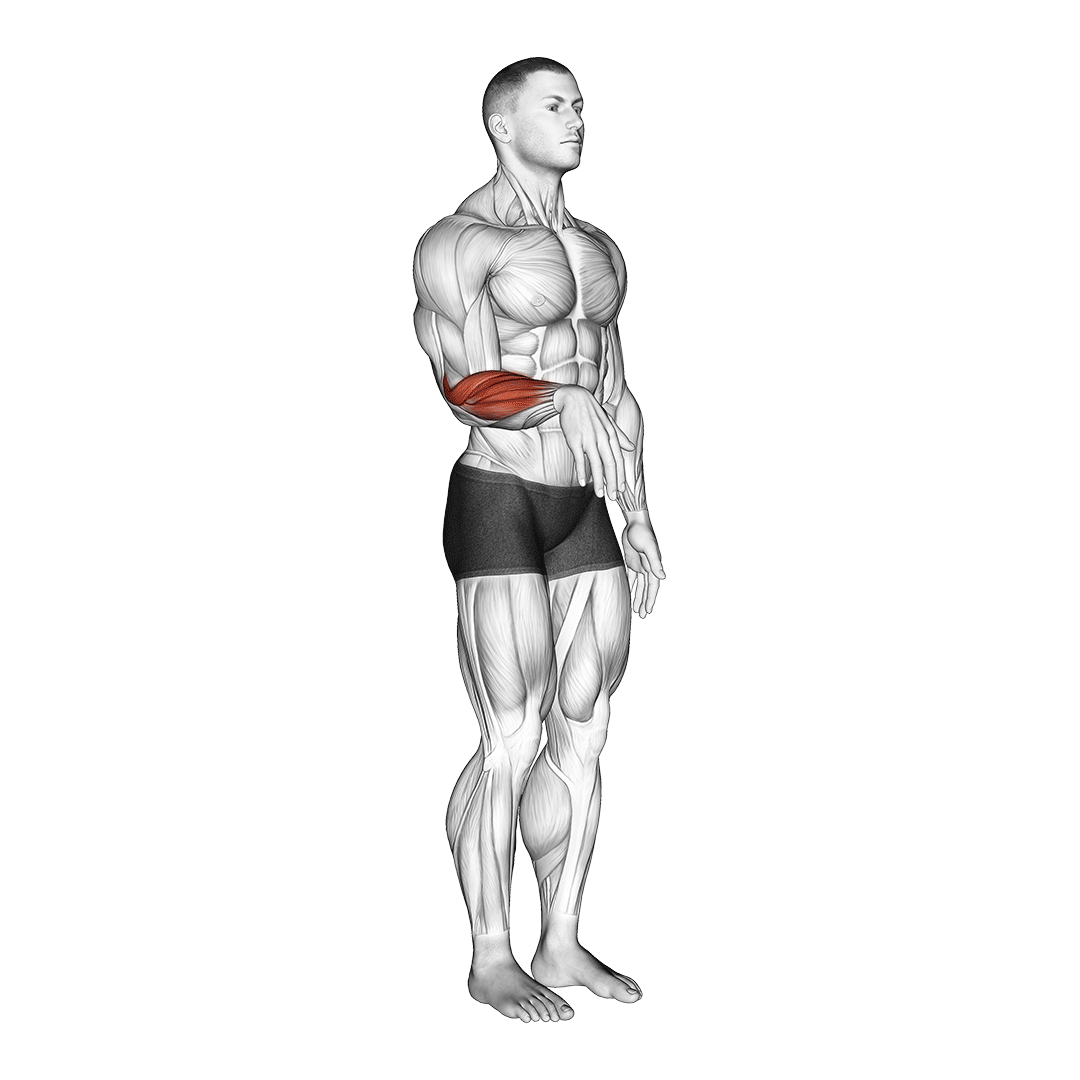
Purpose in Pull-Up Warm-Up:
While the wrists remain in a neutral state during a pull-up, performing flexion and extension drills will enable the muscles of the forearms to function in a more stable and effective manner - allowing the lifter to suspend themselves from the pull-up bar for a longer period, as well as better translate force from the muscles of the body.
How-to:
Hanging the hand off a table or bench, the exerciser will first lower their hand until the knuckles are pointing forward.
From this position, they will then reverse the movement, raising the hand until the palm is facing forward, rather than the knuckles.
Muscular Activation Exercises
1. Assisted Pull-Up Machine
The assisted pull-up machine is the ideal muscular warm-up for pull-ups, as it is quite literally a pull-up but with the resistance of the exerciser’s own bodyweight controlled by the machine.
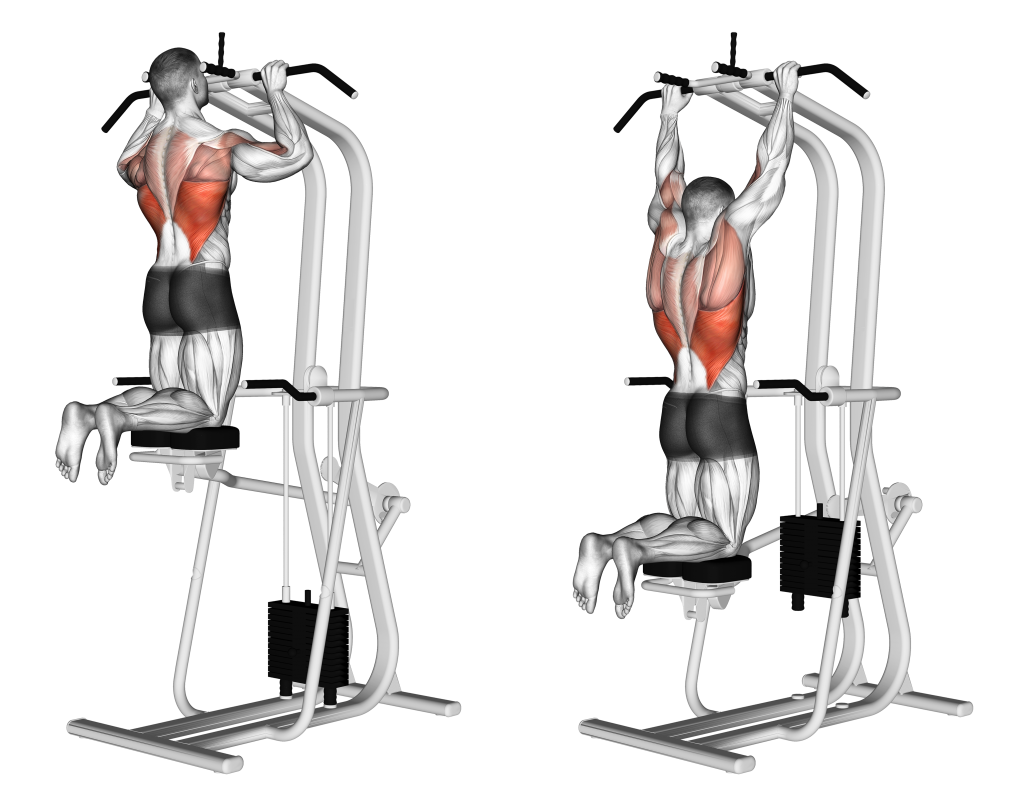
In fact, the assisted pull-up machine is effective enough that it may act as the sole muscular activation exercise within a pull-up warm-up routine.
Purpose in Pull-Up Warm-Up
The assisted pull-up will allow the exerciser to activate each muscle group needed in a conventional pull-up without needing to bear the same level of resistance.
How-to:
In order to ensure that a warm-up is being performed, it is generally a good idea for the exerciser to set the resistance of the machine quite high - higher resistance equates to less of their own body weight being placed on their muscles.
Placing their knees on the pad of the machine, the lifter will simply grip the pull-up bar over their head and continue as if they were performing a conventional pull-up. The resistance of the machine will make the exercise easier, and allow the movement to act as a pull-up warm-up.
2. Lat Pulldown Machine
If an assisted pull-up machine is not available, it is entirely possible for lifters to warm-up with the use of a lat pulldown machine instead.
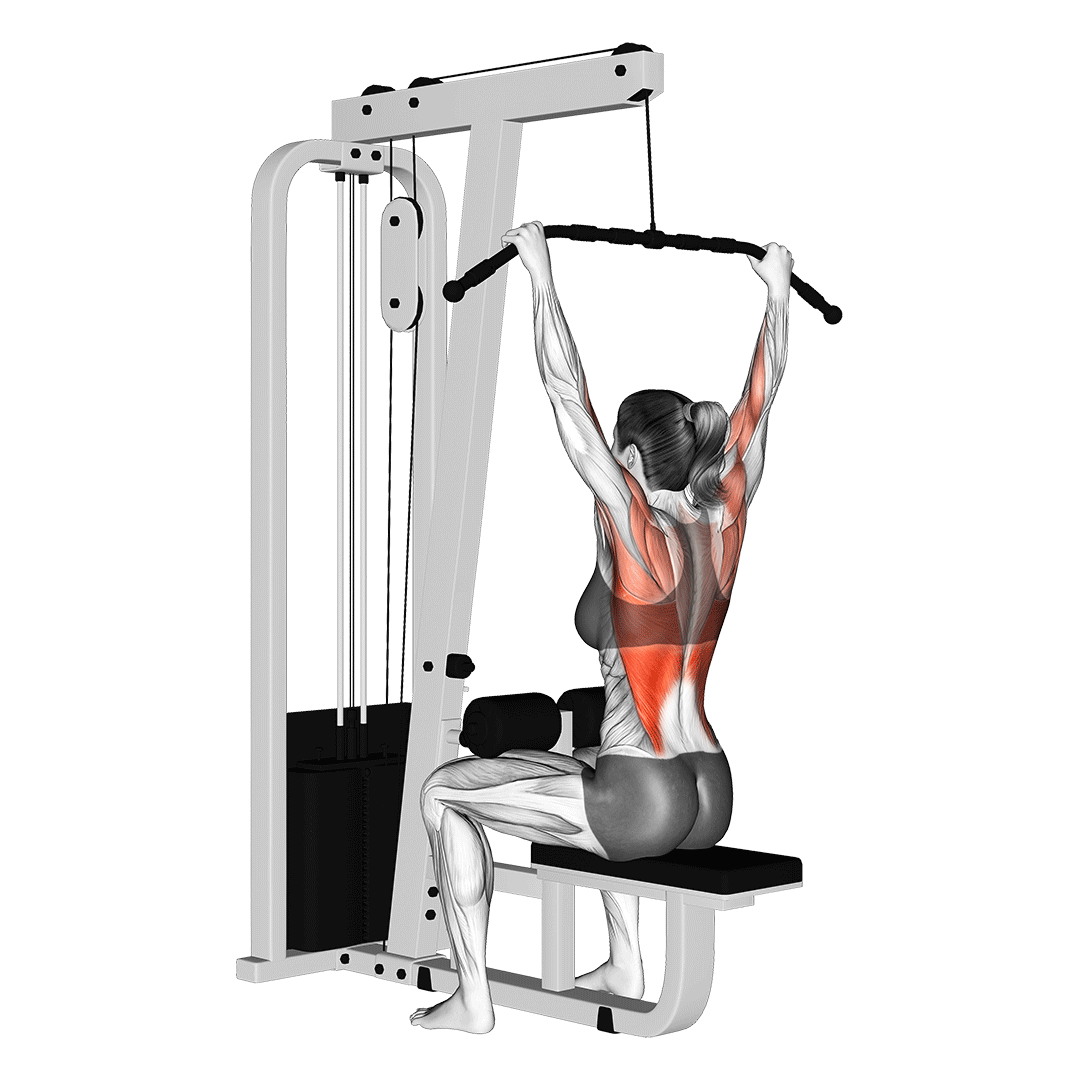
The latter warm-up exercise will activate much the same muscle groups as would be used in a conventional pull-up, and closely resembles the main mechanics of a pull-up as well.
Purpose in Pull-Up Warm-Up:
The lat pulldown machine is used as a muscular activation exercise, targeting the lats, biceps, posterior deltoids and other back muscles without the need for higher levels of resistance.
How-to:
To use the lat pulldown machine for a pull-up warm-up, the exerciser should set the resistance as low as possible.
Sitting within the machine, they will extend their hands overhead and grip the bar before pulling the elbows downwards and backwards, effectively lowering the handle until it is below eye-level.
From this position, they will then slowly reverse the motion to complete the exercise.
3. Inverse Rows
As convenient as they come, the inverse row is also a suitable muscular activation exercise for pull-ups - especially for exercisers without access to an assisted pull-up machine or lat pulldown.
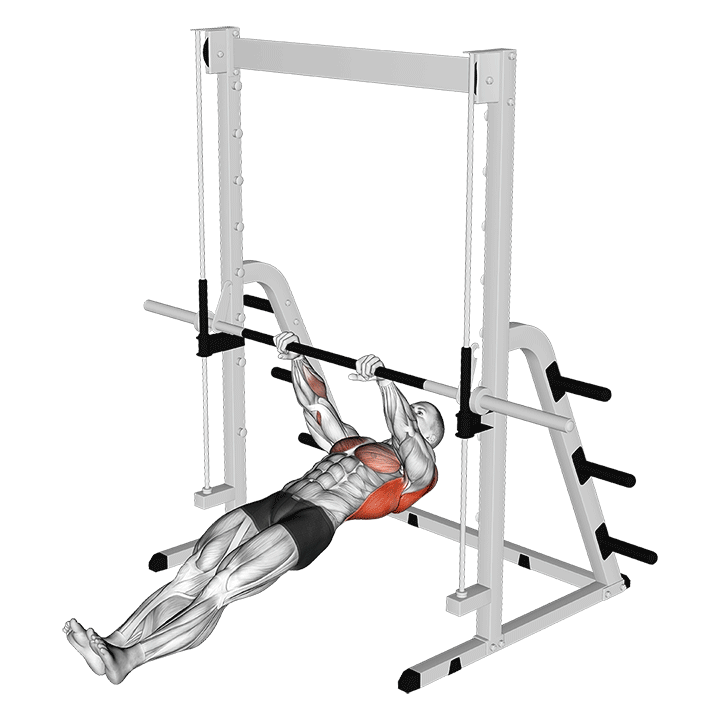
Though the mechanics of the inverse row are not quite the same as those of the pull-up, it will nonetheless activate much the same muscle groups (the back, biceps and core), allowing exercisers to warm up their muscles without the need for any special equipment.
Purpose in Pull-Up Warm-Up:
Like other activation exercises, inverse rows are used to prime the muscles needed to perform a pull-up - reducing the risk of injury, improving blood flow to where it is needed and helping the exerciser consciously contract said muscles.
What the inverse row does not do is help reinforce the mechanics seen in conventional pull-ups, as it is more akin to a barbell row than a pull-up.
How-to:
Suspending oneself beneath a bar or similar item, the exerciser’s body should be rigid and straight as the heels of the feet rest on the ground, chest pointed upwards and the bar held in an overhand grip.
To begin, they will contract the muscles of the biceps and lats, bending the elbows behind their body as they pull their chest towards the bar. Once the elbows are behind the torso, they will then reverse the motion, stopping once the arms are fully extended once again.
In order to ensure that the exercise remains a warm-up and does not fatigue the body, only a few slow repetitions should be performed, with individuals who find the exercise to be too intense moving their legs closer so as to reduce the amount of resistance.
In Conclusion
Remember to include light aerobic exercise at the start of the warm-up, as each of these warm-up exercises require the circulatory system to be already primed for exercise.
Furthermore, it is important to ensure that at no point during a warm-up do you begin to feel fatigue.
A proper warm-up should remain at an RPE of below 4 at most.
References
1. Andrade DC, Henriquez-Olguín C, Beltrán AR, Ramírez MA, Labarca C, Cornejo M, Álvarez C, Ramírez-Campillo R. Effects of general, specific and combined warm-up on explosive muscular performance. Biol Sport. 2015 Jun;32(2):123-8. doi: 10.5604/20831862.1140426. Epub 2015 Feb 16. PMID: 26060335; PMCID: PMC4447757.
2. Ronai, Peter M. and Eric P. Scibek. “The Pull-Up.” Strength and Conditioning Journal 36 (2014): 88-90.
